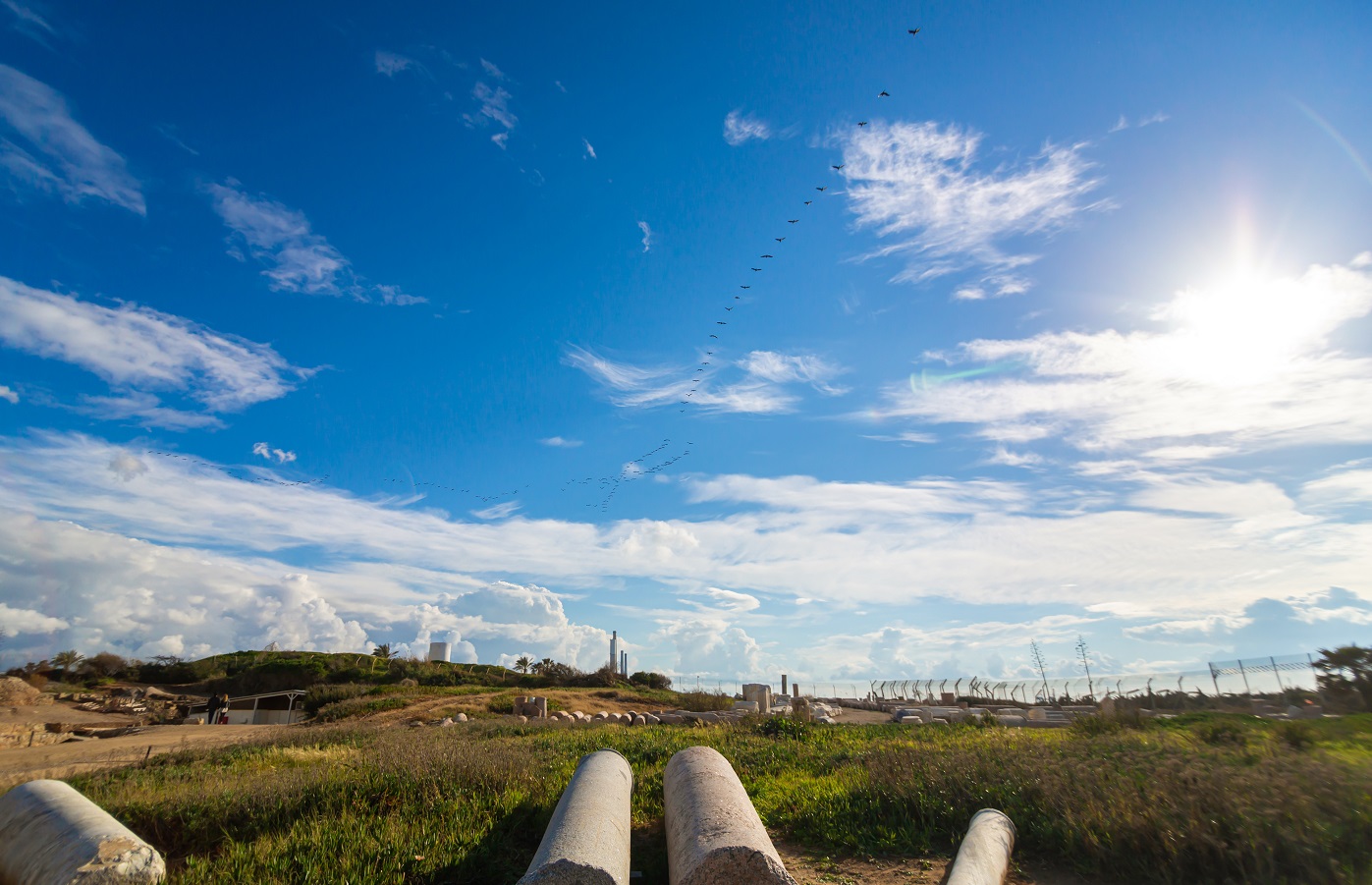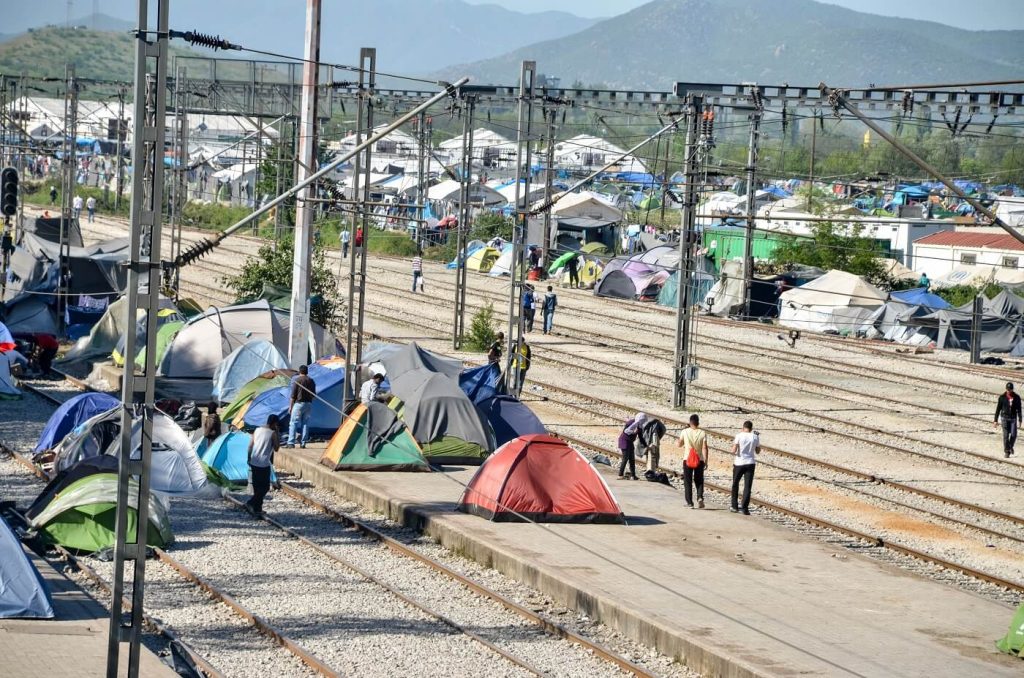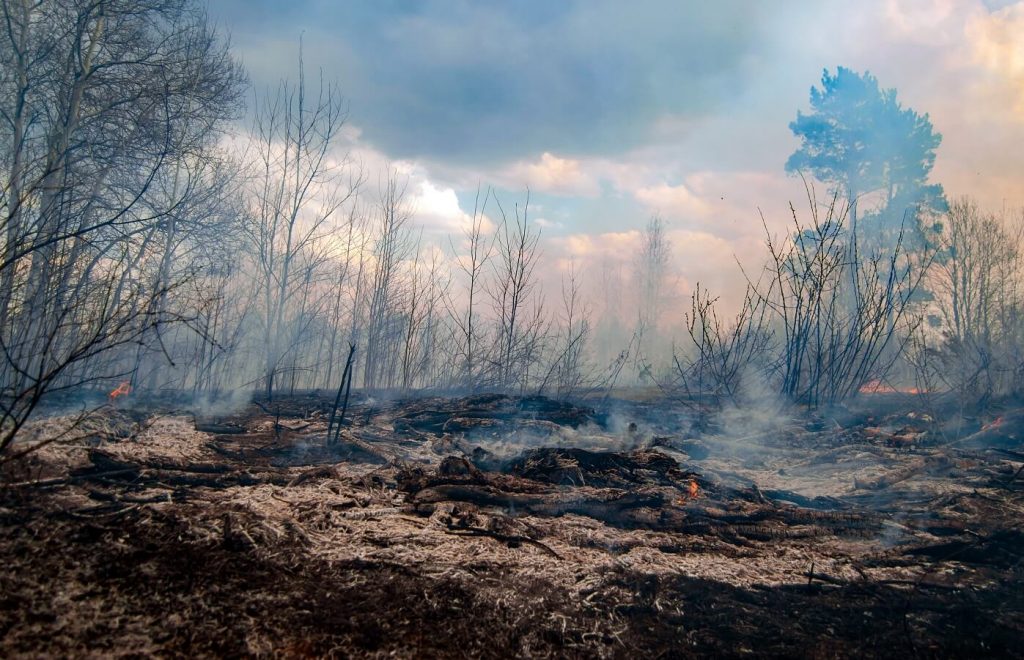Climate migration is one scary reality of our changing climate. As temperatures grow hotter and sea levels rise, more and more regions are becoming inhabitable. Here’s everything you need to know about the “where” of climate migration.
Some facts about climate migration
Climate migration, in simple terms, happens when people are forced to relocate due to negative impacts from climate change. Reasons to move can include hotter temperatures, wildfires, natural disaster risk, and flooding. Often, climate migrants stay within their original country, but this is still forced migration.
The World Bank released a report in 2021 called the Groundswell report which is the largest collection of data on climate migration. It projects that by 2050, as many as 216 million people will be displaced by climate change. The regions with the highest projected share of migrants are East Asia, South Asia, and Sub-Saharan Africa.
Climate migration also disproportionately impacts poor people- they have less means to pick up and move their lives unexpectedly. So even though it happens to everyone, poor people are more severely impacted by it. This exacerbates existing class inequality.
Where has climate migration already happened?
Climate migration isn’t new. These are the countries that have been hardest hit so far.
Bangladesh
This densely populated South Asian country has been drowning in a deluge from multiple sources. It lies only one meter above sea level, so rising oceans are a real concern. Its border with the Indian Ocean also leaves it vulnerable to typhoons. To top it off, glacial melting from the Himalayas floods into the Bay of Bengal, putting the low-lying region at even higher risk. Scientists predict that as much as 25% of Bangladesh’s land mass will be underwater in the next few decades.
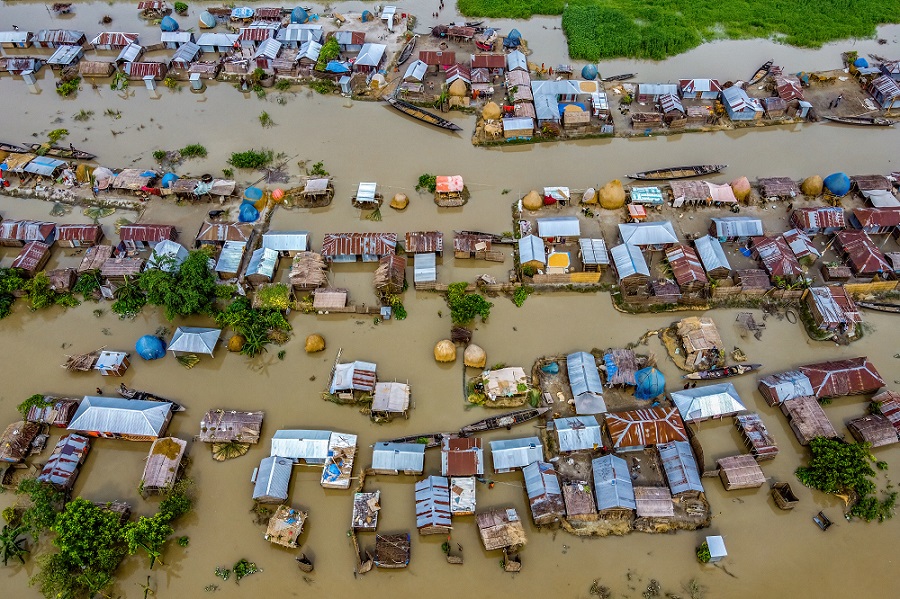
In 2015, an estimated 2,000 people moved into Bangladesh’s capital city, Dhaka, daily. 70% of these migrants were moving due to environmental degradation. The city is already incredibly overpopulated at 22 million residents, which means new migrants often live in unsafe slums. And the city isn’t safe from flooding, either.
The situation is dire, and what makes it even worse is that Bangladesh shares so little responsibility for climate change compared to the global north. The average Bangladeshi emitted 0.56 tons of carbon dioxide in 2020, compared to the average American at 14.24 tons.
Chad
Where Bangladesh is flooded, Chad is parched. The Lake Chad basin has dwindled to a mere puddle at 10% of its original size, leaving scarce natural water resources. Coupled with prolonged drought, there’s not enough water to come by.
People are more likely to become climate migrants when there are other adverse factors at play in their country. On top of climate concerns, Chad is also facing extreme poverty, with 47% of its people living below the poverty line. Most people are subsistence farmers, so being forced to migrate can be devastating.
To top it off, Chad’s recent history has been filled with violent conflict. This places extra strain on citizens, making migration an even more attractive option. All of these factors combine to put Chad at high risk for climate migration.
Where is climate migration currently happening?
Here are some examples of countries where people are currently migrating because of climate change.
The United States
Climate migration isn’t a problem that only happens across the globe. From 2008 to 2021, 10.5 million Americans were internally displaced because of climate change. For the most part, the people who are moving are those living on the west coast due to forest fires, and those living in the path of extreme disasters like hurricanes.
So where are people going? Most migration remains internal, so people relocate to somewhere else in the US. Believe it or not, lots of people are moving to risk-prone areas like California and Florida. One thing to keep in mind is that people don’t make the decision to move in a vacuum. They consider other factors in addition to environmental concerns, like economic opportunities and emotional connections to a place.
This problem isn’t going away, either: 162 million Americans will likely see a decline in the quality of their environment in the coming decades. Mostly this will mean hotter temperatures and less access to clean drinking water.
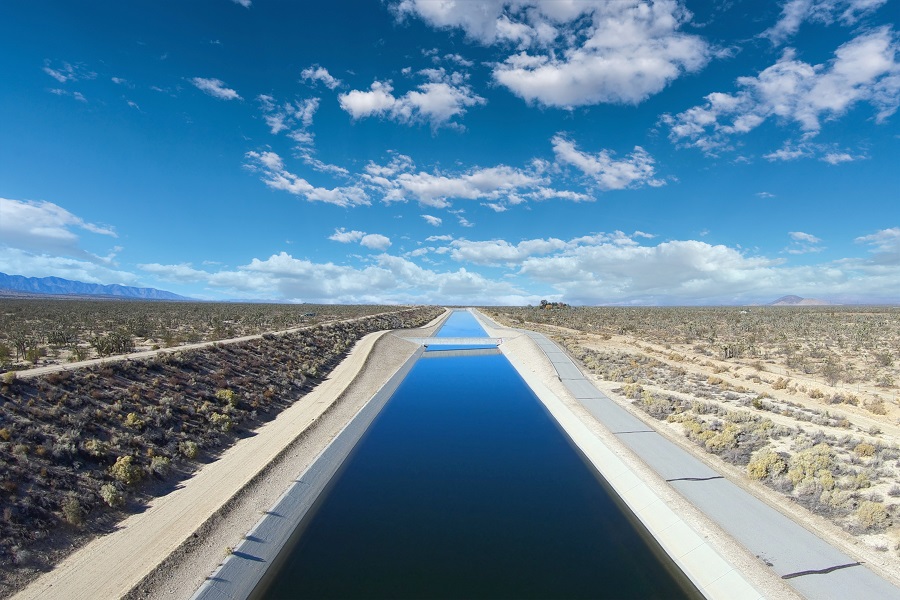
View of the California Aqueduct moving water through the Mojave Desert towards Los Angeles.
China
China had some of the highest rates of displacement due to natural disasters in 2020. The largest number of people were displaced by floods, earthquakes, and storms. China’s high share of migrants is partially because of its high population and large land mass, but its geographic location also lends itself to high likelihood of natural disasters.
Many of the movements in China currently are impermanent, with people moving away in response to a specific disaster and then moving back once the storm has settled. This is a far more viable option for more wealthy people, which can leave poorer people in rural areas to face the storms where they are.
Where is climate migration expected to occur?
These are the most at-risk areas for climate migration in the future.
East Asia
One of the most impacted areas for sea level rise in the coming decades will be East Asia. People have already begun migrating within this reason due to environmental concerns, but rates are only set to increase.
Among other causes, melting arctic ice will cause sea level rise that will impact at least 150 million people by 2050. 70% of the people impacted live in seven East Asian countries: Vietnam, the Philippines, Bangladesh, India, Indonesia, Japan, China, and Thailand.
It’s also notable that this region experiences high rates of severe storms, and those will only become more common. Typhoons only increase flooding risk and make the environment more unsafe, making migration away from the area more likely.
North Africa
The five countries in North Africa (Algeria, Egypt, Libya, Morocco, and Tunisia) are high-risk for climate migration because of drought and sea level rise. The low elevation of the region poses risk for flooding from the north from the Mediterranean sea, and historic droughts have left the region parched.
The likelihood of migration is exacerbated by the region’s low income. When there aren’t domestic economic opportunities, people are more likely to leave in search of a better life. Climate concerns only heighten this phenomenon.
Final Thoughts
Climate migration is yet another scary reality about climate change. Just remember that we’re all in this together and it’s important to take care of yourself in any way you can. Thanks for reading, and keep fighting the good fight!
To learn more, check out our article on the best climate migration books.
